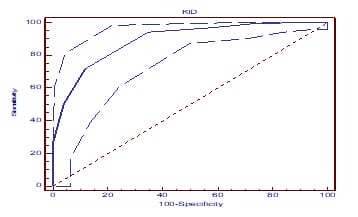Comparison of insulin resistance scoring system with indirect methods of estimating insulin resistance in Indian type 2 diabetes subjects
Kumar R.1*
DOI: https://doi.org/10.17511/ijmrr.2019.i05.04
1* R. Anil Kumar, Associate Professor, Karnataka Institute of Endocrinology and Research, Bangalore, Karnataka, India.
Background: Identification of insulin resistance is very important in management of type 2 diabetes. The euglycemic insulin clamp method, intravenous glucose tolerance tests (IVGTT) and minimal model approximation of glucose (MMAMG) are standard methods of measurement of insulin resistance in research. However, they are impractical in clinical practice and are difficult to perform in population-based research studies. So, a simple scoring system was designed to estimate the insulin resistance. Methods: 200 type 2 diabetes individuals who attended Karnataka Institute of endocrinology and research outpatient department. Fasting plasma glucose, post prandial plasma glucose, fasting insulin, lipid profile, BMI, waist circumference and BP of these subjects were checked. Results: Out of 200 type 2 diabetes subjects 69.5% were males and age group ranging from 26 to 85 years. Duration of diabetes range from 0 to 20 years and 53% of patients had hypertension and 46.5% have hypertriglyceridemia. Insulin resistance calculated by KIER scoring system, HOMA-1, QUICKI, HOMA2 and Fasting Insulin was present in 82%, 63%, 63.5%, 33.5% and 37.5% 0f individuals respectively. KIER scoring system had a statistically significant correlation with HOMA and QUICKY indices. (P value < 0.001) Conclusions: (1) KIER scoring system detects insulin resistance in 82% of type 2 diabetes individuals. (2) HOMA 1 and QUICKI are identical and similarly HOMA 2 and fasting insulin levels are almost identical in estimation of insulin resistance. (3) The KIER scoring system designed is very simple and economical. It takes into consideration the different factors which contribute to insulin resistance.
Keywords: Insulin resistance, HOMA1, QUICKI, Fasting insulin
| Corresponding Author | How to Cite this Article | To Browse |
|---|---|---|
| , Associate Professor, Karnataka Institute of Endocrinology and Research, Bangalore, Karnataka, India. Email: |
Kumar RA. Comparison of insulin resistance scoring system with indirect methods of estimating insulin resistance in Indian type 2 diabetes subjects. Int J Med Res Rev. 2019;7(5):361-369. Available From https://ijmrr.medresearch.in/index.php/ijmrr/article/view/1081 |


 ©
© 